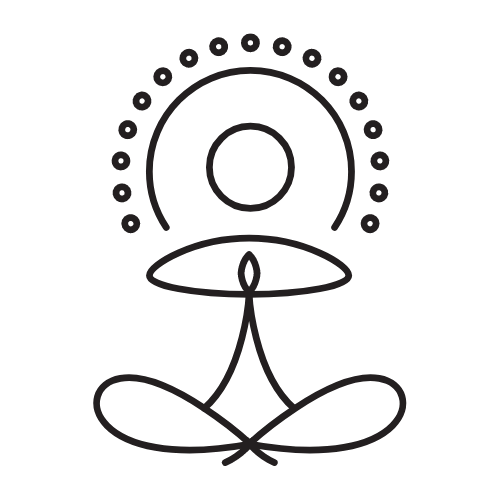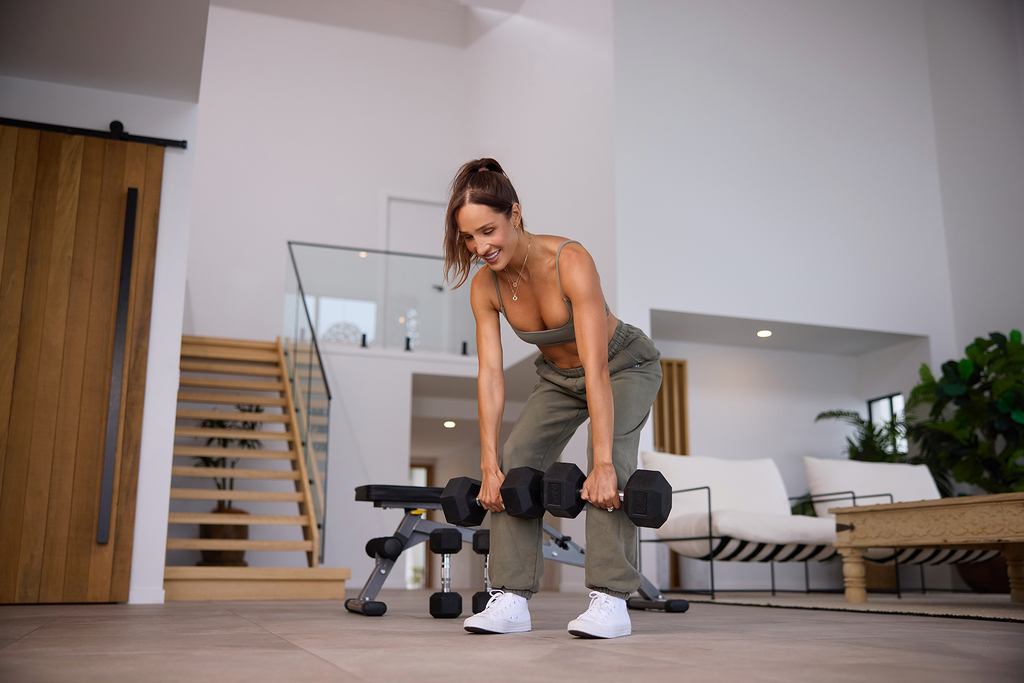There’s a common misconception that at-home workouts are inferior to gym workouts when it comes to seeing results, unless you have a huge selection of equipment in your garage, and that’s simply not true.
You can achieve amazing results on your strength training journey without needing to ever set foot in a gym. Every strength workout you do at home is good for you, whether you’re training with equipment or bodyweight, but if you’re trying to achieve specific results, there is a bit more of a science to it than doing workouts willy-nilly and hoping for the best.
If you could make a few small changes to get more out of your training, you’d do it, right? Here are four boxes you need to tick to see better results, faster, when strength training at home.
Progression
To build strength and muscle, your muscles need to be challenged. In your first week of training, a bodyweight squat might be enough of a challenge, but by week three, those reps are feeling like an absolute breeze. Your muscles have adapted and need to be challenged more if you want to see more change. That’s when you know you need to level up, and this is what progressive overload is about.
In the gym, the most obvious way to progressively overload your muscles is to increase your weights over time to ensure your body is constantly challenged, adapting and improving.
If you have a well-equipped home gym and can go heavy with your weight selection, amazing! Otherwise, there are several other ways to make sure you’re still challenging yourself and progressing.
-
Volume: Rather than challenging your muscles with heavier weights, make your workouts harder by increasing the reps or sets. When three sets of 10 reps is easy, four sets of 12 can force your muscles to adapt in a new way. In Strength At Home with Kayla, you’ll notice the reps and sets increase throughout the program.
-
Tempo: You can make your workouts harder by simply changing the speed of your reps. It’s simple but incredibly effective. Focus on slowing the movement down on the eccentric part of the movement (the lower phase) and then going for explosive power on the concentric or lift phase. With a squat, this could mean taking three seconds to lower down and one second to power up. In a bent-over row, take three seconds to lower your dumbbells or barbell, then one second to lift it to your chest. Kayla’s program also features “negative” exercises, where you’re encouraged to slow down your tempo.
-
Frequency: If you’ve been doing two strength workouts each week, aim for three to ensure you’re challenging your muscles more regularly. If three feels easy and you’ve got time, go for four!
Consistency
Even if you can put your hand on your heart and say you’ve been strength training regularly and challenging yourself, can you also say you’ve been those things consistently?
A couple of weeks of consistent training is enough to see results in terms of your mood, mental clarity and sleep quality, but for strength gains, muscle growth and body composition changes, this is a long game we’re playing.
Between five and 12 weeks of regular training you can expect to see changes in muscular endurance, strength, overall athletic performance and workout recovery, and then more noticeable aesthetic changes (if that’s one of your goals) tend to be most noticeable from around the 12-week mark if you’re making changes in a healthy and sustainable way.
Another side to consistency is what you’re doing in your workouts. Are you following a structured program and repeating exercises to allow for clear improvement and progress tracking, or are your workouts random? Strength At Home with Kayla is designed with a lot exercise repetition, not out of laziness or a lack of ideas, but because that’s the best way to fast track your results.
Practice deadlifts every week and you’ll definitely get stronger. Do deadlifts once every few weeks and they’ll feel like you’re starting afresh every time.
Nutrition
You can’t build something from nothing, and building muscle requires adequate protein intake each day. Try to include a lean source of protein in every meal, aim for high-protein snacks if you can, and consider seeing a nutritionist if you’re not sure about your own nutritional needs or you’re having trouble putting on muscle.
If you’ve noticed your strength and muscle gains but are looking for results in the sense of fat loss, you’ll need to make sure you’re in a calorie deficit, and it also helps to stay hydrated and manage your stress levels.
Feeling like you don’t have enough energy for your workouts? Fuel yourself more! Make sure you’re eating enough food each day, have pre-workout snacks, and a balance of carbohydrates, fats and protein.
Recovery
If you haven’t heard us say this before, we’ll say it again. Your muscles are challenged and stimulated during your workouts, but they grow and adapt during your rest time. Rest days and quality sleep are both crucial to results, as well as helping to prevent fatigue, reduce your risk of injury and enhance your performance.
More isn’t always more, and not giving your muscles time to repair after tough strength sessions can actually lead to slower progress and setbacks.
Every YogaFokus program has at least one weekly rest day and this isn’t a luxury or to let you off the hook for a day – it’s essential that you take it. You can also support your muscle recovery in whatever ways suit your body and lifestyle best, whether that be yoga, stretching, foam rolling, massages, saunas or contrast therapy.
Work out anywhere, anytime with YogaFokus
Ready for your first workout?
Power your progress
Regular strength training at home can do a lot for you. Regular strength training that ticks these four boxes? Even better.
Strength At Home with Kayla is structured to help you get as much out of your at-home training as possible, and a 7-day free trial is a great, zero-commitment way to get started.

